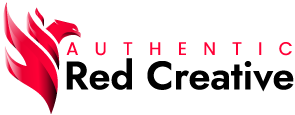WordPress powers a massive portion of the internet, lauded for its flexibility and user-friendliness. But simply having a WordPress site isn’t enough to guarantee visibility. In the crowded digital landscape of 2025, Search Engine Optimization (SEO) is not just beneficial; it’s fundamental for survival and growth. Effective WordPress SEO ensures search engines like Google can find, understand, and rank your content, driving organic traffic – the lifeblood of many online businesses and creators. Whether you run a blog, an e-commerce store, or a corporate site, mastering WordPress SEO is key to reaching your target audience and achieving your online goals. This guide provides vital, up-to-date tips to enhance your WordPress site’s performance and climb those search engine rankings.
Laying the Foundation: Essential WordPress Settings & Setup
Before diving into complex strategies, it’s crucial to ensure your WordPress foundation is solid. Neglecting these initial steps can undermine all your future SEO efforts. Getting the basics right involves choosing the right infrastructure and configuring core settings correctly for search engine visibility and user experience.
Choosing Quality Hosting
Your web host is the bedrock of your website’s performance, directly impacting speed and reliability – two critical SEO factors. While budget shared hosting might seem appealing initially, it often leads to slow loading times, especially during traffic peaks, and potential security vulnerabilities. Search engines, particularly Google, prioritize fast-loading websites as they offer a better user experience. Slow sites suffer from higher bounce rates and lower rankings. Therefore, investing in quality WordPress hosting is non-negotiable. Look for providers offering SSD storage, sufficient resources (CPU, RAM), server-level caching, Content Delivery Network (CDN) integration options, robust security features (like free SSL certificates, firewalls, malware scanning), and excellent uptime guarantees. Managed WordPress hosting can be a great option as it often includes performance optimizations specifically tailored for the platform. Don’t let poor hosting be the bottleneck that throttles your SEO potential.
Selecting an SEO-Friendly Theme
Your WordPress theme dictates your site’s appearance but also significantly influences its underlying structure and speed. A poorly coded or bloated theme, laden with unnecessary scripts and features, can drastically slow down your site and create obstacles for search engine crawlers. When choosing a theme, prioritize those explicitly marketed as lightweight, responsive, and SEO-friendly. Look for clean code, fast loading speeds (you can test demo sites using tools like Google PageSpeed Insights), mobile responsiveness (essential for Google’s mobile-first indexing), and compatibility with popular SEO plugins and page builders. Reputable theme developers like Astra, GeneratePress, Kadence WP, or those built on frameworks like Genesis often prioritize performance and SEO best practices. Remember, a visually stunning theme is useless if it hinders your site’s ability to rank.
Configuring Basic WordPress Settings
Within the WordPress dashboard itself, a couple of fundamental settings directly impact SEO. Firstly, ensure your site is visible to search engines. Navigate to Settings > Reading. At the bottom, you’ll find a checkbox labeled “Discourage search engines from indexing this site.” This box should always be unchecked on a live site. It’s often checked during development, but forgetting to uncheck it upon launch is a common mistake that renders your site invisible to Google. Secondly, configure your permalink structure. This determines the format of your URLs for posts and pages. Go to Settings > Permalinks. The default structure isn’t ideal for SEO. Select the “Post name” option. This creates clean, descriptive URLs (e.g., yoursite.com/your-blog-post-title) that are easy for both users and search engines to understand and often include relevant keywords. Avoid structures that use dates or arbitrary numbers unless absolutely necessary for your site’s context.
Must-Have Tools: Leveraging WordPress SEO Plugins
WordPress’s core functionality provides a basic SEO framework, but to truly unlock its potential and simplify complex optimization tasks, an SEO plugin is essential. These plugins act as your guide, offering tools and feedback to optimize various aspects of your site without needing to touch code.
Why SEO Plugins are Crucial
SEO involves numerous elements – from generating XML sitemaps and editing robots.txt files to optimizing meta tags, implementing schema markup, and analyzing content. Doing this manually is time-consuming and requires technical knowledge. SEO plugins centralize these functions within your WordPress dashboard. They provide intuitive interfaces to manage crucial on-page elements, automate technical tasks like sitemap creation, offer content analysis with actionable suggestions (like keyword usage and readability), and help integrate your site with essential tools like Google Search Console. Essentially, they democratize SEO, making sophisticated optimization techniques accessible even to beginners. Using one primary SEO plugin is highly recommended to avoid conflicts.
Overview of Top Choices
Several excellent SEO plugins dominate the WordPress ecosystem in 2025. The “big three” are Yoast SEO, Rank Math, and All in One SEO (AIOSEO). Yoast SEO has been a long-standing favorite, known for its user-friendly interface, robust content analysis (readability and keyword optimization), and reliable handling of core SEO tasks like title/meta editing and XML sitemaps. Rank Math emerged as a strong competitor, offering a vast feature set even in its free version, including advanced schema markup options, redirection management, 404 monitoring, and even AI-powered content suggestions (in Pro). All in One SEO (AIOSEO) is another powerful, established option, providing comprehensive tools like an SEO audit checklist, TruSEO on-page analysis, rich snippet schema, local SEO modules, and smart XML sitemaps. The best choice often depends on personal preference and specific feature requirements, but all three provide a solid foundation.
Configuring Your Chosen Plugin
Once you install and activate your chosen SEO plugin (remember, only use one!), take the time to run through its setup wizard. This typically guides you through configuring essential settings, such as your site type (blog, shop, etc.), organization/person details (for schema), social profiles, and initial preferences. Crucially, ensure the plugin is set up to generate an XML sitemap. This file lists all your important content, making it easier for search engines to discover and crawl your site. Most plugins automate this. You should then submit this sitemap URL (usually found via the plugin’s settings) to Google Search Console and Bing Webmaster Tools. Also, use the plugin’s features to verify your site with these webmaster tools, which provides invaluable data about your site’s search performance and potential issues.
Content is King: Keyword Research and High-Quality Creation
Technical optimization and plugins lay the groundwork, but the heart of SEO lies in your content. Search engines aim to provide the best possible answers to user queries. Therefore, creating high-quality, relevant content targeted towards what your audience is searching for is paramount.
The Power of Keyword Research
Keyword research is the process of identifying the specific words and phrases (keywords) your target audience uses when searching for information, products, or services related to your niche. It’s about understanding user intent – what problem are they trying to solve or what question are they asking? Targeting the right keywords ensures your content aligns with actual search demand. Trying to rank for terms nobody searches for is futile, while targeting highly competitive generic terms without a strategy is often ineffective. Effective keyword research helps you discover relevant topics, understand search volume (how often a term is searched) and competition, and identify long-tail keywords (more specific, less competitive phrases) that can drive targeted traffic.
Tools and Techniques for Keyword Discovery
Numerous tools and techniques aid in keyword discovery. Start by brainstorming core topics related to your site (head terms). Then, use tools like Google Keyword Planner (free, requires Google Ads account), Google Search itself (check “People also ask” boxes and “Related searches” at the bottom of results), Ahrefs, Semrush, Moz Keyword Explorer (these are powerful premium tools offering deep insights), or free options like KeywordTool.io and the WPBeginner Keyword Generator. Many SEO plugins (like Rank Math and AIOSEO) also integrate keyword research features. Analyze competitors’ websites to see what keywords they target. Focus on finding a mix of high-volume head terms and more specific long-tail keywords relevant to user intent. Organize your findings, perhaps grouping keywords by topic or page.
Crafting Compelling, SEO-Optimized Content
Once you have your target keywords, the focus shifts to creating exceptional content. Google’s algorithms increasingly prioritize content that demonstrates E-E-A-T: Experience, Expertise, Authoritativeness, and Trustworthiness. This means your content should be accurate, comprehensive, well-written, unique, and genuinely helpful to the reader. Aim for depth – longer-form content (e.g., 1500+ words) often performs well for competitive topics as it allows for thorough exploration. Structure your content logically using headings and subheadings. Incorporate your target keywords naturally within the text, headings, and meta tags, but avoid keyword stuffing (unnaturally forcing keywords in), which harms user experience and can lead to penalties. Use synonyms and related terms (LSI keywords) to provide context. Regularly update existing content to keep it fresh and accurate. While AI tools can assist in drafting, always edit and refine AI-generated content to ensure quality, accuracy, and a human touch.
Related: SEO Semantic Markup: The Ultimate Guide to Boosting Search Rankings
On-Page Optimization: Fine-Tuning Your Content for Search Engines

On-page SEO refers to optimizing the individual elements on your web pages to improve rankings and user experience. This involves strategically using keywords and ensuring elements like titles, headings, and images are correctly configured.
Optimizing Titles and Meta Descriptions
The page title (or title tag) and meta description are crucial HTML elements displayed in search results. The title tag is a primary ranking factor and heavily influences click-through rates (CTR). It should be concise (ideally under 60 characters), include your primary keyword (preferably near the beginning), and accurately reflect the page’s content while being compelling enough to encourage clicks. The meta description, while not a direct ranking factor, acts as ad copy on the SERP. A well-written meta description (under 155-160 characters) summarizes the page content, includes relevant keywords naturally, and entices users to click. Most SEO plugins provide dedicated fields to easily edit these for each post and page, often with previews and character counters. Ensure every important page has a unique, optimized title and meta description.
Structuring Content with Headings
HTML heading tags (H1, H2, H3, etc.) structure your content, creating a logical hierarchy that benefits both readers and search engines. The H1 tag should represent the main title/topic of the page, and there should typically be only one H1 per page. Use H2 tags for main sections and H3s for sub-sections, and so on. This improves readability by breaking up text and allows users to scan for relevant information. For SEO, headings provide context about the page’s structure and topics. Incorporate your primary and secondary keywords naturally within your headings where it makes sense, but prioritize clarity and readability over forced keyword inclusion. SEO plugins often analyze your heading structure as part of their on-page checks.
Strategic Keyword Placement
Beyond titles, metas, and headings, integrate your primary keyword and relevant secondary/LSI keywords naturally throughout your body content. Good practice suggests including the primary keyword within the first 100 words (the introductory paragraph) and potentially in the concluding paragraph. Use it logically where it fits within the main text. However, avoid over-optimization or “keyword stuffing” – repeating keywords excessively and unnaturally. Google’s algorithms are sophisticated enough to understand synonyms and context. Focus on writing high-quality, reader-friendly content first, and then ensure your target keywords are present naturally. Aim for a keyword density that feels organic, often cited around 1-2%, but don’t obsess over exact numbers; prioritize natural language.
Image SEO Best Practices
Images enhance user engagement but can slow down your site if not optimized. They also present SEO opportunities. First, compress images before uploading them using tools like TinyPNG or plugins like Smush or ShortPixel to reduce file size without significant quality loss. Choose appropriate file formats (JPEG for photos, PNG for graphics with transparency, WebP for superior compression). Second, use descriptive filenames that include relevant keywords (e.g., blue-widget-side-view.jpg instead of IMG_1234.jpg). Third, and most importantly for SEO, always provide descriptive alt text (alternative text) for every image. Alt text describes the image for visually impaired users (via screen readers) and helps search engines understand the image’s content and context. Include relevant keywords naturally in the alt text, but focus on accurate description.
Internal and External Linking Strategy
Linking is fundamental to how the web works and plays a vital role in SEO. Internal links connect pages within your own website. A strong internal linking strategy helps users navigate your site, distributes “link equity” (ranking power) throughout your pages, and helps search engines discover and understand your content hierarchy. Link relevant pages together using descriptive anchor text (the clickable text of the link) that gives context about the linked page (e.g., use “our guide to WordPress speed optimization” instead of “click here”). Avoid having “orphan pages” with no internal links pointing to them. External links point from your site to other websites. Linking out to high-quality, authoritative, relevant sources can enhance your content’s credibility and provide value to your readers. Don’t be afraid to link out, but ensure the links are relevant and lead to trustworthy sites.
Related: 5 Essential SEO Strategies to Boost Your Website’s Ranking
Technical SEO Tune-Up: Ensuring Peak Performance and Accessibility
Technical SEO involves optimizing your website’s infrastructure so search engines can efficiently crawl, index, and understand your site. It focuses on aspects like speed, mobile-friendliness, security, and structured data.
Website Speed Optimization
Site speed is a confirmed Google ranking factor and critical for user experience. Slow-loading pages lead to high bounce rates and frustration. Use tools like Google PageSpeed Insights, GTmetrix, or Pingdom to test your speed and identify bottlenecks. Key optimization techniques for WordPress include: enabling caching (using plugins like WP Rocket, W3 Total Cache, or host-level caching), optimizing images (compression, lazy loading), using a Content Delivery Network (CDN) to serve assets from servers closer to the user, minifying CSS and JavaScript files (removing unnecessary characters/code), enabling GZIP compression on your server, keeping WordPress core, themes, and plugins updated, limiting the number of plugins, and optimizing your database. Addressing Core Web Vitals (LCP, FID/INP, CLS) reported in Search Console is crucial.
Mobile-First Indexing and Responsiveness
With the majority of searches happening on mobile devices, Google primarily uses the mobile version of your site for indexing and ranking (mobile-first indexing). Therefore, ensuring your WordPress site is fully responsive and provides an excellent experience on all screen sizes is non-negotiable. Most modern, well-coded WordPress themes are responsive by default. Use Google’s Mobile-Friendly Test tool to check your pages. Ensure text is readable without zooming, clickable elements are appropriately spaced, and content isn’t wider than the screen. Pay attention to mobile loading speed as well, as mobile connections can be slower.
Security and Trust with HTTPS/SSL
Security is paramount for both users and search engines. HTTPS (Hypertext Transfer Protocol Secure) encrypts the connection between a user’s browser and your server, protecting sensitive data. Google uses HTTPS as a ranking signal, and browsers flag non-HTTPS sites as “Not Secure,” which erodes user trust. Ensure your site uses HTTPS by installing an SSL certificate. Many hosting providers offer free Let’s Encrypt SSL certificates that can be easily enabled. Once installed, ensure all traffic is redirected from HTTP to HTTPS, and update your site URL in WordPress settings (Settings > General). Use tools or SEO plugin checks to ensure there are no mixed content warnings (pages loading insecure HTTP elements on an HTTPS page).
Schema Markup for Richer Results
Schema markup (structured data) is code you add to your website to help search engines understand the context of your content more effectively. It provides explicit clues about the meaning of page elements (e.g., identifying a recipe, event, product, review, organization, or FAQ). While not a direct ranking factor, schema can enable “rich snippets” in search results – enhanced listings that include extra information like ratings, prices, cooking times, or FAQ dropdowns. These richer results can significantly improve visibility and CTR. Many SEO plugins (Yoast, Rank Math, AIOSEO) offer built-in tools to easily add various types of schema markup to your content without needing to write code manually. Tools like Schema Pro are also available.
Managing Crawlability (XML Sitemaps, Robots.txt, fixing errors)
For search engines to rank your content, they first need to be able to crawl and index it efficiently. An XML sitemap (usually generated by your SEO plugin) acts as a roadmap, listing your important URLs for crawlers. Submit this sitemap via Google Search Console and Bing Webmaster Tools. The robots.txt file tells search engine bots which parts of your site they shouldn’t crawl (e.g., admin areas, certain files). Be careful when editing this file, as incorrect rules can block important content. Use Google Search Console regularly to monitor crawl errors (like 404 Not Found errors) and indexing issues. Fix broken links promptly and use 301 redirects for permanently moved content to guide users and search engines to the correct pages and preserve link equity.
Related: Dwell Time is Key: Understanding Its Impact on SEO
Beyond Your Site: Off-Page SEO and Monitoring
While on-page and technical SEO focus on optimizing your own website, off-page SEO involves actions taken outside your site to impact your rankings, primarily through building authority and trust. Continuous monitoring is also essential to track progress and adapt your strategy.
The Importance of Quality Backlinks
Backlinks (links from other websites to yours) are one of the most significant off-page ranking factors. Search engines view links from reputable, relevant websites as votes of confidence, signaling that your content is trustworthy and valuable. However, quality trumps quantity. A few links from high-authority sites in your niche are far more valuable than hundreds of links from low-quality or irrelevant sites. Focus on earning backlinks naturally by creating exceptional content that others want to link to. Engage in ethical link-building strategies like guest blogging on relevant industry sites, outreach to mention your content where appropriate, creating shareable resources (like infographics or studies), and promoting your content effectively. Avoid buying links or participating in link schemes, which can lead to penalties.
Monitoring Your Progress
SEO is not a “set it and forget it” activity. Continuous monitoring is crucial to understand what’s working, identify issues, and track your progress towards goals. Install Google Analytics on your WordPress site (plugins like MonsterInsights simplify this) to track traffic sources, user behavior, popular content, and conversions. Regularly check Google Search Console for insights into keyword performance (impressions, clicks, positions), indexing status, crawl errors, mobile usability issues, security problems, and backlink data. Use rank tracking tools (often included in SEO suites like Semrush, Ahrefs, or standalone tools) to monitor your rankings for target keywords over time. Analyzing this data helps you refine your strategy and demonstrate the ROI of your SEO efforts.
The Ongoing Nature of SEO
Search engine algorithms are constantly evolving, competitor strategies change, and new content is always being published. Therefore, SEO requires ongoing effort and adaptation. Regularly audit your site’s technical health, on-page optimization, and content performance. Keep abreast of SEO best practices and algorithm updates. Continue creating high-quality content and promoting it. Monitor your competitors. Refresh and update older content to keep it relevant. SEO is a long-term strategy that requires patience and persistence, but the rewards – sustainable organic traffic and increased visibility – are well worth the investment.
Related: 12 Unique Strategies to Reduce Bounce Rate on Mobile in 2025
People Also Ask (FAQs)
Here are answers to some frequently asked questions about WordPress SEO:
Q1: Why isn’t my WordPress site showing up on Google?
There could be several reasons:
- New Site: It takes time (days to weeks) for Google to discover and index a new site.
- Indexing Blocked: Check Settings > Reading in WordPress to ensure “Discourage search engines from indexing this site” is unchecked. Also, check your robots.txt file for unintentional blocks.
- Manual Actions/Penalties: Though less common, your site might have a penalty. Check Google Search Console for notifications.
- Technical Issues: Severe crawl errors might prevent indexing. Check the Coverage report in Search Console.
- Lack of Quality Content/Links: If the site has very little content or no external signals of authority, it might struggle to get indexed or ranked. Submitting your XML sitemap via Google Search Console can help speed up discovery.
Q2: What’s the best SEO plugin for WordPress?
There isn’t one single “best” plugin, as it often depends on user needs and preferences. The most popular and highly-regarded options in 2025 are Yoast SEO, Rank Math, and All in One SEO (AIOSEO).
- Yoast SEO: Very user-friendly, excellent content analysis, solid core features. Great for beginners and experienced users alike.
- Rank Math: Extremely feature-rich (even the free version), includes advanced schema, redirection, 404 monitoring, and more. Appeals to those wanting extensive functionality in one plugin.
- AIOSEO: Powerful and comprehensive, offers SEO audits, great on-page analysis, local SEO features, and easy setup. It’s recommended to try one and stick with it to avoid plugin conflicts.
Q3: How often should I update content for SEO?
There’s no fixed schedule, but regular content updates are beneficial.
- Publish New Content Consistently: Maintain a regular publishing schedule (e.g., weekly, bi-weekly) relevant to your niche and resources. This signals to search engines that your site is active.
- Update Existing Content: Periodically review your older, important posts (“cornerstone content”). Update them for accuracy, add new information, improve clarity, fix broken links, and optimize based on current performance data. Refreshing key pages can provide significant SEO boosts. Prioritize updating content that has lost traffic or rankings, or covers rapidly changing topics.
Q4: Is WordPress good for SEO out of the box?
WordPress provides a solid technical foundation for SEO. It generates clean code, allows easy content creation, and offers customizable URL structures (permalinks). However, it’s not perfectly optimized “out of the box.” You still need to:
- Choose an SEO-friendly theme.
- Install and configure a good SEO plugin (like Yoast, Rank Math, or AIOSEO).
- Perform keyword research and create high-quality content.
- Implement on-page optimization techniques.
- Focus on site speed and mobile-friendliness.
- Build backlinks. WordPress makes implementing SEO best practices easier than many other platforms, but it requires active effort.
Q5: How long does it take for WordPress SEO to work?
SEO is a long-term strategy, and results aren’t instantaneous. The time it takes to see significant results can vary widely depending on factors like:
- Competition: Highly competitive niches take longer.
- Site Age & Authority: Older, established sites often see results faster than brand new ones.
- Resources & Effort: The intensity and consistency of your SEO efforts matter.
- Technical Foundation: Starting with a well-optimized site helps.
- Content Quality & Frequency: High-quality, consistent content creation accelerates progress. Generally, you might start seeing some initial positive movement (e.g., indexing, minor ranking improvements) within a few weeks to a few months. However, achieving substantial, stable rankings for competitive keywords often takes 6 months to a year or even longer of consistent, high-quality SEO work. Patience and persistence are key.
Conclusion
Optimizing your WordPress site for search engines in 2025 is a multifaceted but achievable process. By focusing on a solid technical foundation, leveraging the power of SEO plugins, committing to thorough keyword research and high-quality content creation, meticulously implementing on-page optimization, and building site authority through quality backlinks, you can significantly enhance your website’s performance. Remember that SEO is not a one-off task but an ongoing journey of implementation, monitoring, analysis, and adaptation. Stay informed about best practices, consistently apply these vital tips, and be patient. The effort invested in comprehensive WordPress SEO will yield valuable returns in the form of increased organic traffic, better brand visibility, and ultimately, the achievement of your online objectives.






